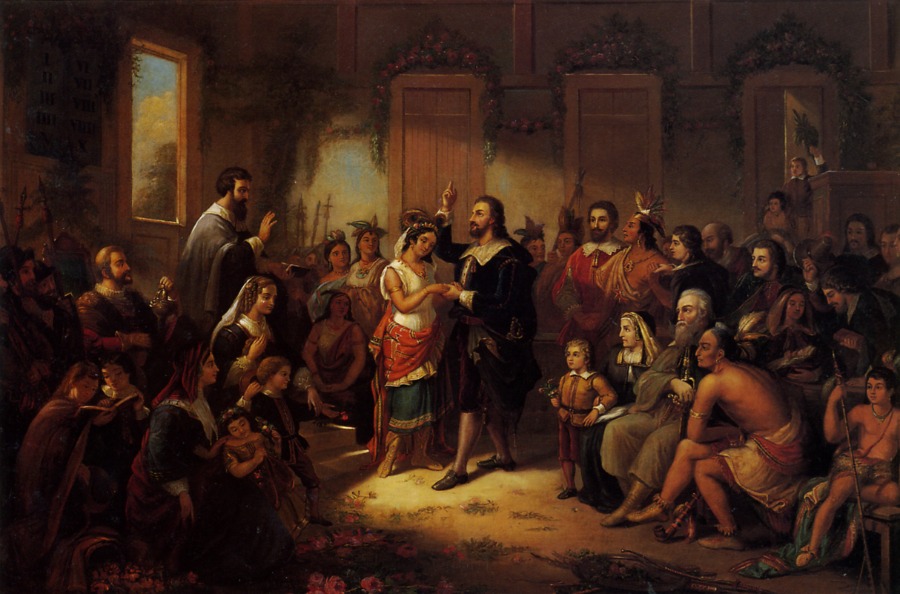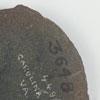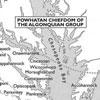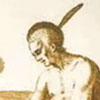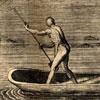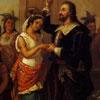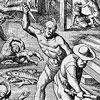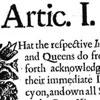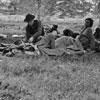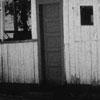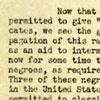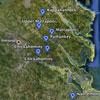Between 1608 and 1610, relations between the Powhatan and the English deteriorated – and were restored briefly only after the kidnapping and later marriage of Matoaka (also known as Pocahontas), one of Powhatan’s daughters, to colonist John Rolfe in 1614. Few details of the marriage were recorded, and this 1855 painting by Henry Brueckner presents a highly romanticized view of the ceremony, which would have likely occurred in a small church built from wood. As you examine this painting, consider how images of Pocahontas have changed over time, and the ways that European perspectives have influenced our understanding of the early years of the Jamestown settlement.
In the winter of 1608, the English again failed to grow and save enough corn to last through the winter and they set out to trade with the Virginia Indians for food. Powhatan began demanding guns in return for corn and the English became increasingly belligerent, threatening tribes in order to secure supplies of food. Occasional skirmishes with the Powhatan increased.
Under a series of governors – including John Smith, Thomas West, Baron De La Warr (with his second-in-command Thomas Gates), and Sir Thomas Dale – relations with the Powhatan and other Virginia Indian groups in the area worsened. In 1610, De La Warr and Gates began building new forts along the James River and attacked the Kecoughtans, a previously friendly group. Similar attacks to capture food stores and extend the colony’s control would continue, with retaliation from Virginia Indians, until the marriage of Pocahontas and Rolfe in 1614, which initiated a shaky peace between the colonists and the settlers.
Source: Henry Brueckner, “The Marriage of Pocahontas,” 1855, in Pocahontas: Icon At The Crossroads Of Race And Sex, accessed September 17, 2011. Also engraved by John McCrae, “The Marriage of Pocahontas,” 1855, Library of Congress, Prints and Photographs Division.


